Results 3,281 to 3,290 of 12094
Thread: Anandtech News
-
09-05-13, 04:30 PM #3281
Anandtech: OverclockersUK release 8Pack Range of ‘World’s Fastest Systems’
For users in the UK, OverclockersUK is one of the major e-tailers for computer components. In a country where off-the-shelf components are almost non-existent bar a few independent stores, we have to go online to get our fill. Today, OverclockersUK invited media the the launch of their new pre-built enthusiast systems. These systems are built to be some of the the world’s fastest systems, and are co-authored with their in-house overclocker and UK #1, 8Pack.
More...
-
09-05-13, 05:30 PM #3282
Anandtech: Understanding AMD's Semi-Custom Strategy
With Microsoft’s acquisition of Nokia we are now living in a world where all three major client OS providers (Apple, Google and MS) all own/are device companies. Samsung gets an honorary seat at the table by virtue of making devices as well as most of the components inside those devices (and fabbing the ones they don’t make), on top of adding a fair bit of software customization of their own. That makes four companies with the ability to control most of the market, what happens to everyone else?
Both Google and Microsoft have stated publicly that acquiring device companies doesn’t mean that they want to stop working with outside partners. Naturally that’s what you’d expect Google and Microsoft to say to avoid overly angering existing partners shipping existing devices. In the long run however, companies like Acer, ASUS, Dell, HP, HTC, Lenovo and LG (among others) will find themselves in an interesting position, competing against their OS suppliers that also happen to be vertically integrated device makers.
I don’t expect that we’ll immediately transition to a world where there are only four brands of smartphones, tablets and notebooks. I suspect that all of the existing players, vertically integrated or not, will do their best to maintain/grow marketshare despite the threat of real consolidation. After all, a threat alone isn’t enough to force companies out of a market.
When faced with a very large competitor, you need a broad set of partners. It’s all of these other companies that AMD views as potential candidates (including Samsung it seems) for its semi-custom approach to silicon manufacturing.
Last year AMD’s new CEO Rory Reed talked about delivering semi-custom silicon, similar to what AMD does in game consoles, to OEMs who want to differentiate. At the time I didn’t really get how this strategy would work but I think I now have better insight into the theory. If we assume that Apple and Samsung will remain major players in the consumer device space, both of these companies have heavily invested in developing their own software and SoCs. If you’re an OEM looking to compete with either (or both), you need the same assets. As a company that isn’t Apple or Samsung however, you don’t have the resources to truly integrate vertically and become a silicon manufacturer as well as run a profitable business. AMD hopes that there will be at least a couple of enlightened players in the device space who realize they need a silicon strategy to differentiate but don’t have the resources/expertise/desire to become a silicon player.
The idea here is that AMD would then provide those OEMs with a semi-custom SoC, where they could choose their own IP blocks (video decode/encode, CPU cores, GPU, etc...), and help give them competitive parity or ideally even an advantage over the larger players. Counting on the bigger guys having higher overhead, being less agile and having to make larger profits should, at least on paper, give the smaller players a fighting chance.
It took me a while to understand AMD’s semi-custom strategy, but seeing how things have shaken up over the past few months I think I can understand it a lot better than what it was first floated at AMD’s Financial Analyst Day last year.
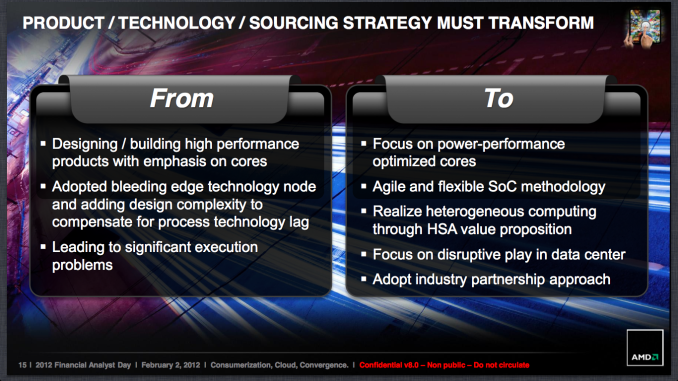
The other thing I think I understand a lot better now is why former Lenovo President & COO, Rory Read, was chosen as the man to run AMD. I’ve met most of the new guard at AMD and generally came away quite impressed. The challenge set in front of them is nothing short of insane, but the company has put together a good combination of leaders and visionaries to at least stage a comeback. The big unknown for me was always Rory. Until a few months ago I’d never even met the guy - I’d only heard him speak to analysts, and the nature of those conversations just wasn’t up my alley.
I finally had the opportunity to speak with Rory a few months ago in Austin in a much more candid setting. It was during that meeting that he laid out his strategy for AMD, and it was then that I understood why he was there.
Rory’s playbook for AMD is actually very similar to how he ran things at Lenovo. Lenovo was stuck in a similar position not too long ago: it had a relatively high margin enterprise business that it used to fund and grow a much lower margin consumer business. The new AMD strategy is quite similar.
Traditional margins on x86 CPUs are nothing short of tremendous. The fabless semiconductor manufacturers that compete with Intel don’t operate on anywhere near the same margins. AMD used to play in the same space Intel did, and as a result was often viewed as disappointing as their margins wouldn’t hold up. The problem was that although AMD shed its fab burden, its margins were always viewed as needing to be up at Intel levels. That perception has to change.
Rory’s strategy is to use high margin revenues from existing markets (e.g. PC client, GPUs) and use it to fund a low cost structure expansion into new markets. On paper it’s a sound approach, but the unexpected quick decline of AMD PC sales/shipments threw a wrench in the plan.
The company had to shrink in order to deal with lower than expected revenues than what Rory had planned on when he first took the job almost two years ago. Based on what Raja Koduri told me after he joined a few months ago, it seems like it’s working:
“Raja returns to a very different AMD than the one he left. I asked him what’s different and he responded by saying the AMD he left acted like a company that was 10x its size. Today, AMD is a much smaller and more agile company. Raja believes AMD is in a better position to take advantage of new opportunities vs. being in the hopeless position of never being able to catch up in mature markets.”
So you take the higher margin PC revenues, and use them to invest in lower cost products in new markets. Rory expects semi-custom silicon to see heavy use in these new markets by the way. Lower cost typically means lower margin, which is something the new AMD is ok with. Making Intel margins (or even traditional AMD margins) is tough, in these new markets AMD just needs to be making better margins than the ARM players as the company transitions from being fully PC supported, to PC + additive revenue from these new markets and finally to a position where AMD’s revenues are dominated by these new revenue sources. What are the new markets in specific? Getting anyone at AMD to answer that question today is tough, but I suspect the first place to look is among all of those other players I talked about earlier. The companies tasked with competing with these vertically integrated powerhouses could rely heavily on AMD.
At the end of the day, Rory Read is at AMD because he knows how to navigate a low margin business and run it efficiently to the point where he can use gains in one area to fund another (at Lenovo he took China and Commercial sales to buy him more wiggle room in consumer client). I finally get the plan, now all that’s left is to see if it’ll work.
More...
-
09-05-13, 06:00 PM #3283
Anandtech: AMD Center Giveaway: Acer V5, 11.6" quad-core Temash Notebooks
Today we launched the AMD Center, a portal on AnandTech that aggregates all of our AMD content in one place. Thanks to AMD's sponsorship you'll get a cleaner interface on all AMD articles, as well as reduced advertising on those pages. The portal will also serve as a way for AMD to reach out to you all directly as we're pulling in AMD tweets and have a feed of AMD's own blogs on the right hand side. AMD also wants to hear from you, and we've got some opporuntities to help with that going forward. Finally, the AMD Center serves as a destination for a bunch of pretty awesome AMD giveaways we've got planned. With AMD's support we've got better prizes and more of them to give away. We're kicking off the giveaways with three ultra thin 11.6-inch notebooks: Acer's V5.
The V5 features a touch enabled 11.6-inch 1366 x 768 IPS display, 4GB of DDR3L memory (2GB on board, 2GB in a single SO-DIMM slot, expandable to 6GB total) and normally ships with a standard SATA hard drive. I asked AMD if they would be willing to swap out the hard drives for SSDs and they agreed - so if you win, your V5 will ship with a 128GB Samsung SSD 840 drive (you can thank me later ;)).
The 2.65 pound Acer V5 features AMD's quad-core A6-1450 APU. That's four Jaguar cores running at 1GHz (1.4GHz max turbo) with a Radeon HD 8250 GPU. It's a nice little system with a very power efficient APU.
Here's the deal. To enter, simply post a comment below (US residents only, please only make a single post, contest requirements below) explaining your current PC setup and why you want, or need to win a V5. What I'm looking for here is an understanding of what you currently own in terms of computing devices (PCs, notebooks, tablets, etc...), how you use them and how winning a V5 would change/improve your current setup. Make your entries good as they may come in handy for some other stuff we've got planned in the future.
If you win, AMD wants your feedback on the machine after you get it. You'll be asked to provide a short review (a paragraph or two) talking about your experience with the system. Do a good job and your feedback may even be featured on AnandTech.
Good luck!
More...
-
09-05-13, 09:00 PM #3284
Anandtech: Potential Nexus 5 FCC Approval Reappears - LG-D820 (Update: Snapdragon 800
The past few days have been interesting in the way of Nexus 5 (or Nexus 4 2013) rumors. After a few grumblings that seemed to confirm that LG would once again be responsible for the smartphone Nexus slot, there was silence, an FCC approval disclosure and then retraction, and then purported spotting of the Nexus 5 in Google's KitKat announcement video.
Today the FCC re-posted the approval documentation for ZNFD820, or the LG-D820 model, a device which is steadily gaining traction as potential candidate for the Nexus 5. Although as usual LG has requested confidentiality on the internal, external, and test setup photos, what's particularly interesting is that the wireless charging disclosure includes some shots of the device's battery cover and its inductive charging and NFC coils. In addition the back is not designed to be user replaceable, and there's no microSD card slot. The backside appearance seems to line up with the visual appearance of the Nexus device from the video as well, with similar shape and oddly oversized cover glass for the camera aperture. Keep in mind the photo is of the inside of the battery cover.
What's interesting about the LG-D820 approval is that it includes almost all of the bands you'd want for a North American SKU that covers LTE, CDMA, and HSPA+ for AT&T, T-Mobile, and Sprint. There's no Verizon LTE (Band 13) in this band coverage. Non inclusion of Verizon LTE banding in an upcoming Nexus isn't much of a surprise after relationship issues following Galaxy Nexus (CDMA/LTE), inclusion of Sprint is a bit of one, but not as much (Google Voice, Google Wallet).
The breakdown is LTE on bands: 2, 4, 5, 17, 25, 26, 41 (1 and 7 are probable as well, FCC only lists what's relevant inside the USA), WCDMA on bands: 2, 4, 5, and CDMA2000 1x/EVDO on band classes 0, 1, and 10 (800, 1900, 900 MHz). There's also 802.11a/b/g/n/ac (the screenshot above doesn't call out 802.11ac but it is explicitly mentioned and tested in the appropriate sections of the test reports) as well as BT 4.0 LE (Bluetooth smart ready). Inclusion of CDMA2000 1x/EVDO in and of itself is surprising, and the device includes the necessary LTE banding for Sprint, of course CDMA2000 is also relevant in a few other markets in combination with LTE.
Update: Another thing that caught my eye was inclusion of mention that the LG-D820 uses variable antenna matching (antenna tuning) which would be necessary if it's going to accommodate a lot of different bands on just one transmit antenna. This could end up being a Qualcomm tunable frontend part. Display diagonal is also listed as 126.0mm which works out to 4.96-inches diagonal for display, enough to warrant a Nexus 5 name, and a length and width of 131.9 mm x 68.2 mm.
Update: Brad Molen from Engadget caught a reference to MSM8974, aosp_hammerhead and KyeLimePie[sic] inside the disclosure as well. There are two references to MSM8974 (Snapdragon 800) which would to validate that as being the SoC platform and this as a Nexus device running 4.4 which was codenamed Key Lime Pie up until its recent rebranding to KitKat.
It's too early to know for sure if this is the real deal or not, but both rumblings that I've heard and external factors are starting to point in this direction, and inclusion of both AOSP, MSM8974, and Key Lime Pie (now KitKat) references make it hard to refute. S4GRU (Sprint 4G Rollout Updates) was one of the sites tracking LG-D820 on its forums for some time, I've been paying close attention to that situation as well since I heard about that device model and saw the band combinations onboard. Recent attention just intensifies suspicions. The inclusion of LTE in the next Nexus smartphone is an obvious and welcome upgrade, and Google has been indeed pushing for more impressive banding in its devices, which we saw through the Nexus 7 (3G/4G LTE) band combination.
Source: S4GRU, Engadget
More...
-
-
-
09-30-13, 08:30 AM #3287
Anandtech: Analyzing Valve’s SteamOS, Steam Machines, and Steam Controller Announceme
In 2012, Valve released an update to their Steam platform called Big Picture, which essentially consisted of a new user interface tailored towards the needs of the living room where people use large HDTVs and gamepads in place of the usual keyboard and mouse interface. We’ve seen 10-foot UIs before – Windows Media Center and most of the game console interfaces being prime examples – and they’re pretty much required if you want a UI people can use while sitting on the couch. Along with Big Picture, the past several years have also seen Valve and Steam branch out from being a Windows-only software solution to something that’s available on OS X, Linux, and even (in a more limited fashion) on the PlayStation 3. Not every game within Steam is currently available on every platform, but increasingly we’re seeing more titles launch with support for all of the supported Steam platforms.
With all of the pieces in place, we started hearing rumblings about the “SteamBox” earlier this year, with most people assuming that Valve would put together something akin to a gaming console with a predefined set of hardware. This week, Valve has released additional details about what they’re planning, and it’s a move that will definitely shake up the gaming industry. Valve is taking a three-pronged approach, and they released some information about each aspect over the course of the past week: SteamOS, Steam Machines, and the Steam Controller. Many details are not yet finalized, but let’s quickly go over what we do know.
The Triple Header
Perhaps the most interesting aspect of the announcement is that Valve will be releasing a new operating system, SteamOS. Similar to Google’s Android and Chrome OS, SteamOS will be based on Linux, and obviously there will be a lot of tuning to make SteamOS work well as a living room OS. Valve specifically mentions support for in-home streaming; music, TV, and movie services; and family options to allow the sharing of games between Steam profiles.
Valve is also promising the ability to play all of the current ~3000 titles available on Steam, but unfortunatley it appears Windows/OS X titles will only be available via streaming (e.g. similar to NVIDIA's SHIELD streaming games from your PC to your SHIELD device). It would be nice to see Valve do something similar to WINE (Wine Is Not Emulator) for those titles that don’t have native Linux support, but that's perhaps more of a long-term solution. Needless to say, it comes as no surprise that recently both NVIDIA and AMD made note of the fact that they will be doing additional work to improve Linux driver support moving forward.
Other aspects of SteamOS basically build off of everything that makes Steam as a platform so attractive to many users. All of your games that you purchased – any time in the history of Steam – are available anywhere you log in. Your friends list comes with you, save games and settings are stored in the cloud, and the Steam Workshop provides a wealth of user created content. Steam is currently available in 185 countries and 25 languages, and as anyone that has used Steam since it first debuted a decade ago can attest, Valve is constantly looking on ways to improve the platform. SteamOS may be the next evolution of Steam as a platform, but of course Valve will continue to support other operating systems as well.
The second bullet point is perhaps the easiest to understand: the Steam Machines are preconfigured hardware solutions from various partners that will run SteamOS. We don’t know precisely what the hardware will be, but all signs point to it being mostly off-the-shelf hardware that you could use in building any modern PC. There will likely be entry-level hardware, midrange hardware, and high-end solutions that cover a range of price points and performance.
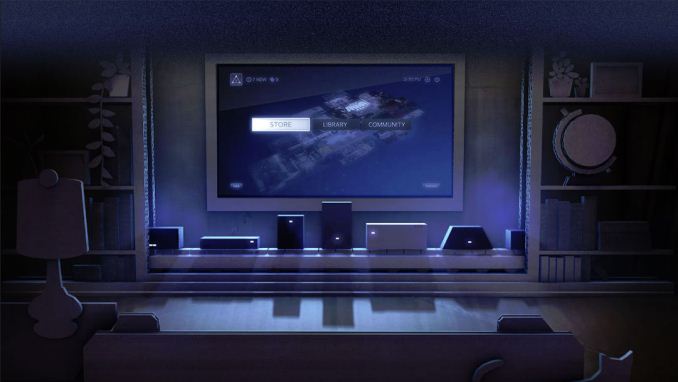
Valve will be releasing a prototype Steam Machine to 300 beta testers over the coming months, selected more or less randomly from applications received before October 25. We’ll know more about the precise hardware configuration Valve is using in a month or so. It will also be possible to download and install SteamOS on your own (though we're not sure when SteamOS will go public), so at its most basic level a Steam Machine is just any PC that happens to be running SteamOS.
The third and final item that Valve announced is their new Steam Controller. Gamepads are nothing new for gaming consoles, but the Steam Machines are in a somewhat unique position of providing a vast library of games where many titles were not built with gamepads in mind, and certainly not the Steam Controller (which hasn't existed prior to this announcement).
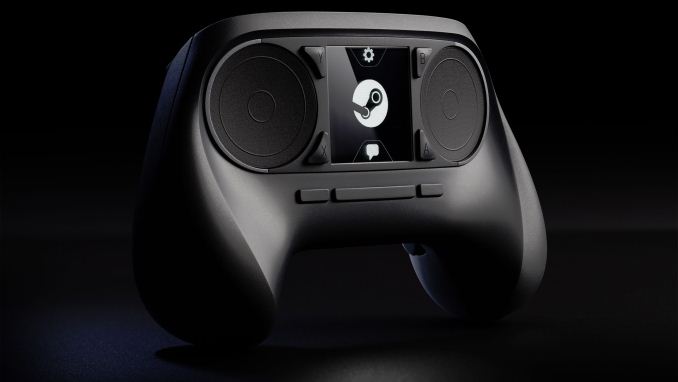
The Steam Controller is significantly different than what we’ve seen with most gamepads. Instead of the usual dual thumbsticks, the Steam Controller includes two high-resolution circular trackpads, which are also clickable. In addition, there will be 16 buttons (with the ability to shift between left or right hand configurations via a software switch) and a touchscreen in the center – though the initial prototype will have four buttons in place of the touchscreen. Valve is also promising improved haptics (i.e. force feedback) via dual linear resonant actuators (small, strong, weighted electromagnets attached to the circular trackpads).
As with SteamOS, Valve is promising full compatibility with the entire Steam library, which means they need a way for their gamepad to work in place of the keyboard and mouse that some titles are going to expect. The combination of a touchscreen, various buttons, and the circular touchpads together provide the necessary platform, and a utility will allow users to customize any game for the new controller. Valve will also be leveraging the power of their Steam Community to allow users to share custom configurations, so similar to NVIDIA's GeForce Experience and AMD's new Gaming Evolved (powered by Raptr), you won't necessarily need to roll your own for each game you play.
Tying It All Together
So that’s the short overview, and as usual the proof is in the eating of the pudding – a pudding that we don’t have yet. Given that digital entertainment is a rapidly growing market, it’s easy to understand why Valve would be interested in moving beyond Steam in its current form to something that can compete with game consoles (and perhaps even Android and iOS at some point, though Valve makes no mention of such a use case right now). SteamOS will be available for free, both to end users and manufacturers, but it’s interesting that there’s no mention of it being open source – the core OS will continue to be open, naturally, but I suspect all of the custom code that speaks to Valve’s servers will never see the light of day (which is fine by me).
A more cynical perspective might say that there’s nothing particularly new or shocking in this announcement. Sure, we’re getting a new gamepad at some point, and another Linux-based operating system, but if you already have a Windows PC connected to your HDTV and running Steam, this hasn’t really changed the equation much. And depending on how many games need to be streamed from a Windows/OS X system to your Steam Machine, it's even less of a big deal.
Still, Microsoft is going to get even more competition from alternative OSes, and as someone that enjoys competition I’m not going to complain. It also means that Valve has the potential to increase their revenue stream, not so much from the hardware side but rather there’s the potential for inexpensive Steam Machines to take over the roles that are currently filled by traditional consoles, and of course every game purchased on a Steam Machine is going to come through Steam. You can almost hear the “ka-ching”!
There’s a difference between Steam Machines and traditional consoles of course – or at least there appears to be. There’s no specific set of hardware being dictated by Valve, which means for better or worse users will still have to deal with customizing graphics settings, resolutions, etc. and developers still need to worry about catering to a wide range of hardware with sometimes radically different levels of performance. On the bright side, it also means that Steam Machines won’t have to last 7 to 10 years between updates.
What I’m most interested in seeing right now is what sort of performance we actually get out of SteamOS, on a variety of hardware, with native SteamOS (Linux) games. We all know that Windows is a tremendously bloated operating system – just look at the default install size of Windows 7 or Windows 8. However, just because there’s a bunch of extra stuff that we may not use all that much doesn’t mean that Windows as a gaming platform isn’t viable. I haven’t personally done any testing of gaming performance on Windows versus gaming performance on OS X or Linux, but anecdotally Windows performance has been substantially better in nearly every case.
Valve has the potential to change the equation; with an OS focused much more on gaming, performance in SteamOS could be competitive or even better than what we see under Windows. Of course, for non-Linux titles that are streamed from your Windows/Mac system, performace will be no better and you'll incur a small penalty in latency. Even if SteamOS were to get something similar to WINE, we’re talking about adding additional overhead to DirectX/OpenGL, at least initially. It’s a pretty big stretch to expect better performance from SteamOS when it initially launches in 2014, but down the road we might see some real changes in the status quo. Give NVIDIA and AMD some time to work with Valve, and maybe we’ll see porting of AMD’s Mantle to the platform as well (and NVIDIA’s CUDA, etc.).
Short-term, we have more questions than answers, but this is definitely a bold (if somewhat expected) move from Valve. They’ve gone from creating games to becoming perhaps the largest “game publisher” around, and their next step appears to directly challenge behemoths like Microsoft (on both the Windows and Xbox fronts), Sony, and Nintendo. I’d be lying if I didn’t admit that I would really like to see Valve succeed at altering the gaming system landscape yet again. How long might it take to get that? Probably more than a year or two, best-case.
As noted above, Valve will be sending out 300 prototype Steam Machines, mostly to randomly selected applicants. You can read details on how to apply for the beta program on the Steam Machines page, which would get you not only the prototype Steam Machine but also the prototype Steam Controller. You need to apply before October 25, and participants will apparently be selected and receive their prototype machines before the end of 2013. (Wish me luck!)
Gallery: Analyzing Valve’s SteamOS, Steam Machines, and Steam Controller Announcements




More...
-
09-30-13, 10:00 AM #3288
Anandtech: NVIDIA GeForce 331.40 Beta Drivers Now Available
Whenever NVIDIA capstones a driver branch with the release of a WHQL driver – as happened two weeks ago with 327.23 – a new beta can’t be far behind. To that end, just in time for the end of September NVIDIA has released a new beta driver from a new driver branch, 331.40.
331.40 is the first driver out of NVIDIA’s R331 branch. Unlike the previous R325 branch, which introduced a number of features and performance enhancements, this one looks to be much smaller in scope as going by NVIDIA’s release notes. On the tech side this driver introduces support for OpenGL 4.4, and this driver upgrades NVIDIA’s driver-based ambient occlusion feature to implement the company’s new HBAO+ algorithm, first used in last month’s Splinter Cell: Blacklist.
However most gamers will be more interested in the fact that these are the recommended drivers for the Battlefield 4 beta, which starts up tomorrow. This driver also contains performance improvements for “several PC games when compared to the GeForce 327.23 drivers”, though NVIDIA’s notes don’t go into what those games are.
As usual, you can grab the drivers for all current desktop and mobile NVIDIA GPUs over at NVIDIA’s driver download page. And thanks to reader SH SOTN for the heads up.

More...
-
09-30-13, 02:00 PM #3289
Anandtech: MSI Unveils GP Series Notebooks: GP60 and GP70
Today MSI unveiled their latest notebook line of notebooks, the GP series designed for mobile productivity, entertainment, and gaming. For those not keeping track, that means MSI now has five different gaming laptop/notebook lines: GP, GX, GE, GS, and GT. Those are ordered roughly in line with increasing performance, with the GX series being something of a wildcard as it uses AMD APUs instead of Intel CPUs but includes a high-end AMD GPU. There’s a decent amount of overlap between the series as well, with the GE and GP notebooks in particular using what appears to be the same chassis but differing components.
The big draw on the GP series is going to be lower prices (relative to the GE series), but if you’re hoping for high performance gaming you’re likely going to be disappointed. Here’s a quick rundown of the specifications of the announced GP notebooks, although at present only the GP60 has a product page on the US MSI site.
The new GP series currently has two chassis sizes: 15.6-inch and 17.3-inch. The fastest/”best” model is the middle column, which includes a quad-core processor, 1080p display, and a 7200 RPM hard drive. The GP70 currently lists one model with a 1600x900 display and a dual-core i5-4200M processor, as well as a 1TB hard drive (presumably 5400 RPM). There’s a GP60 that’s basically the same except with a 750GB hard drive (again, presumably 5400 RPM) and a 1366x768 glossy display. We haven’t personally seen or tested any of these notebooks, so I can’t comment on the quality of the displays, but hopefully at least the GP60 2OD-072US 1080p LCD is a decent offering (but don’t hold your breath).MSI GP Series Notebooks Model GP70 2OD-027US GP60 2OD-072US GP60 2OD-052US Processor Intel Core i5-4200M
(DC 2.5-3.1GHz 37W)Intel Core i7-4700MQ
(QC 2.4-3.4GHz 47W)Intel Core i5-4200M
(DC 2.5-3.1GHz 37W)Chipset HM86 Memory 8GB DDR3L-1600 Graphics GeForce GT 740M 2GB GDDR3
(384 cores, 810MHz+, 1.8GHz DDR3)
Intel HD Graphics 4600
(20 EUs at 400-1150MHz)Display 17.3" Matte HD+ (1600x900) 15.6" Matte 1080p (1920x1080) 15.6" Glossy HD (1366x768) Storage 1TB HDD
DVDRW750GB (7200RPM) HDD
DVDRW750GB HDD
DVDRWNetworking 802.11n WiFi
Bluetooth 4.0
Gigabit EthernetBattery 6-cell (65Wh?) Battery/Power 90W Adapter 120W Adapter 90W Adapter I/O Ports, Etc. 2 x USB 3.0
2 x USB 2.0
Gigabit Ethernet
VGA
HDMI 1.4
Headphone
Microphone
Flash Reader (SD XC/HC)
Kensington Lock
720p HD Webcam
SteelSeries 102-key KeyboardOperating System Windows 7 Home Premium 64-bit Dimensions 16.45" x 10.60" x 1.53" (WxDxH)
(418mm x 269mm x 38.9mm)15.07" x 9.82" x 1.27" (WxDxH)
(383mm x 249mm x 32.3mm)15.07" x 9.82" x 1.27" (WxDxH)
(383mm x 249mm x 32.3mm)Weight 5.95 lbs (2.70kg) 5.29 lbs (2.40kg) 5.29 lbs (2.40kg) Pricing $950 MSRP, $850 online $1050 MSRP, $950 online $900 MSRP, $800 online
Other than the CPUs, the GPU is going to largely determine what sort of performance you can expect from these notebooks. Using the Kepler GK107 core, the GT 740M delivers at least reasonable performance in most games. My own testing suggests that medium quality 1080p gaming is possible and most titles, and high quality 1366x768 is usually an option as well, but you’re definitely not going to be able to Max out settings in demanding games, and the use of DDR3 instead of GDDR5 means antialiasing will likely prove too much for the graphics chip. Also worth a quick note is that MSI lists 8GB of RAM, and given what we’ve seen with several of their other notebooks I expect they’re using a single 8GB SO-DIMM and leaving the second SO-DIMM slot unpopulated, which means you can easily upgrade to 16GB (2x8GB) if you so desire.
Most of the other features are unremarkable, but it’s interesting to note that MSI is apparently choosing to go with Windows 7 Home Premium on all of their GP series notebooks – yet another vote of no-confidence for Windows 8. Also note that the GP60 with the quad-core processor includes a 120W power adapter instead of a 90W adapter.
These new GP series notebooks are being unveiled today, but it appears that availability is immediate – Newegg currently stocks all three models. What’s more, Newegg’s pricing is $100 less than the MSRP in all three instances. That’s actually really good news, as the MSRP seemed high to me. Of course the GE60 and GE70 are still available if you need/want more performance, but you’re basically looking at roughly $250 extra to upgrade to the GTX 765M, which means the GP series is definitely the better bargain. If you really want a faster gaming notebook, I’d suggest making the jump to something with GTX 770M or higher instead; you can find GTX 770M laptops starting at $1400 so it’s basically $200-$250 extra for each additional 30~50% in GPU performance (meaning, GTX 765M is 30~ 50% faster than the GT 740M, and GTX 770M should be another 30~50% over GTX 765M).
Gallery: MSI Unveils GP Series Notebooks: GP60 and GP70






More...
-
09-30-13, 03:30 PM #3290
Anandtech: Massdrop TECK Keyboard Group Buy
Earlier this year I reviewed both the TECK and ErgoDox keyboards, the latter coming via Massdrop. As I discussed in the ErgoDox review, Massdrop does a group buy of selected products in order to get reduced pricing, which can result in substantial savings. Right now they’re doing a group buy on the TECK, and while it wasn’t necessarily my favorite of the ergonomic keyboards I’ve tested, it has some good elements as well – plus TECK has also released their public remapping utility, which allows you to permanently change key mappings if you want to, as an example, swap the location of the Shift and Control keys.
At present, the TECK Massdrop group buy has six days remaining, with six of the required 25 slots filled. That will get you the keyboard at a price of $212, which is about 15% off the retail price of $248 – not bad. If the group buy gets at least 50 purchasers, the price will drop to $199 (20% off), and the maximum discounted price of $188 (24% off) kicks in with at least 100 buyers. That’s about the lowest price you’ll find on any ergonomic keyboard with mechanical switches, period.
Of course, maybe you don’t want the TECK and would prefer my favorite of the keyboards I’ve reviewed, the Kinesis Advantage? Well, Massdrop is in the voting stage on the Kinesis Advantage – you can also vote for the Linear Feedback model with Cherry MX Red switches. Neither of the Kinesis options have entered the buying stage, but if there’s enough interest from our readers I’m sure they could get there. Massdrop lists a variety of other mechanical switch keyboards as well, mostly in the voting stage, so you could give those a look as well.

More...
Thread Information
Users Browsing this Thread
There are currently 17 users browsing this thread. (0 members and 17 guests)






 Quote
Quote

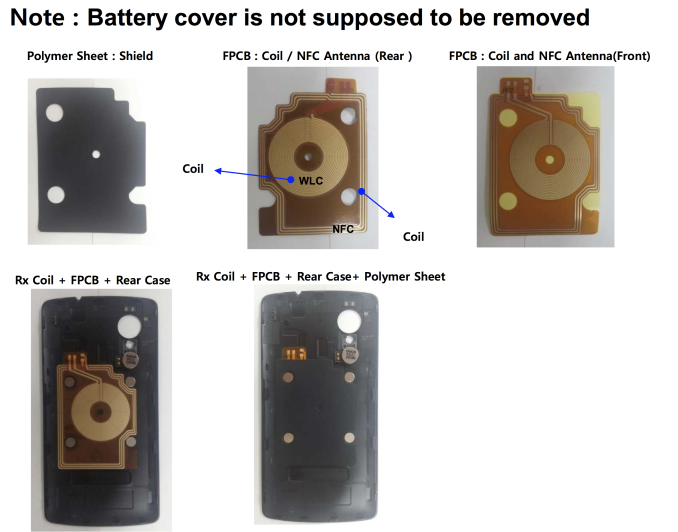

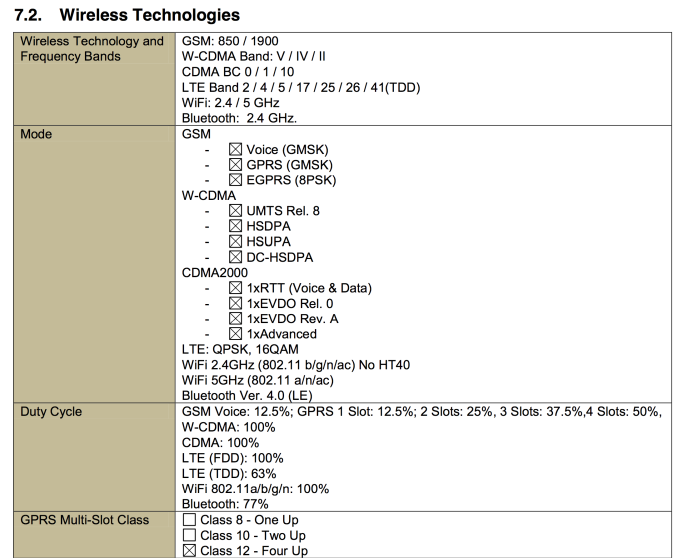
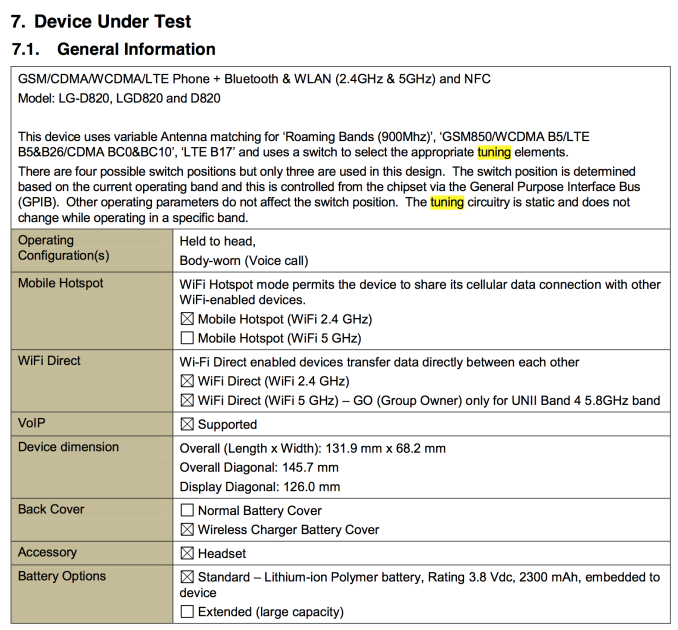
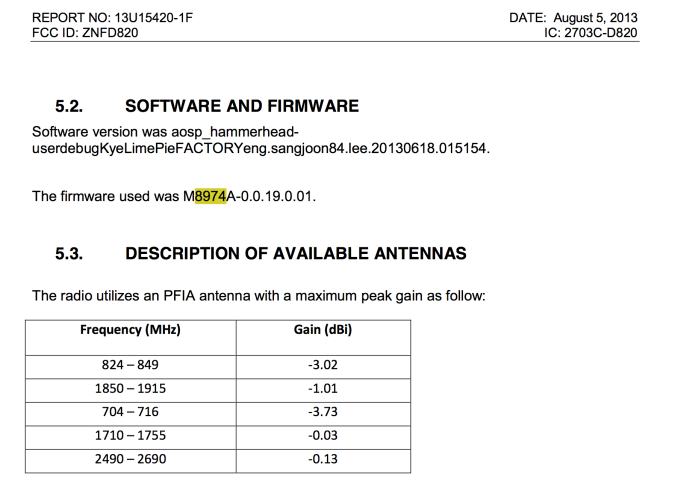











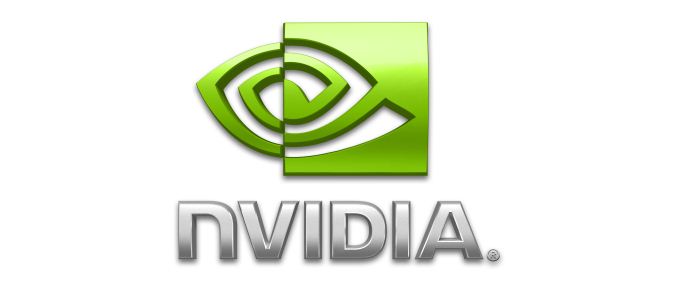
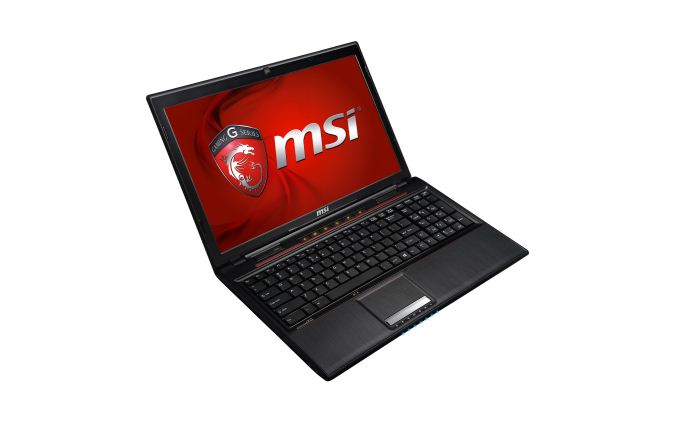
_575px.jpg)
















Bookmarks